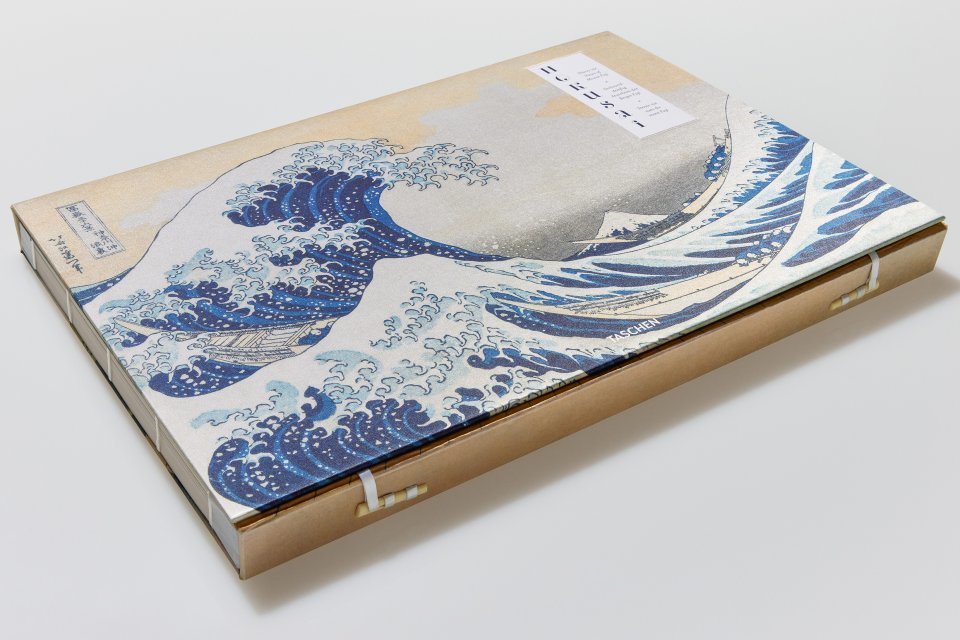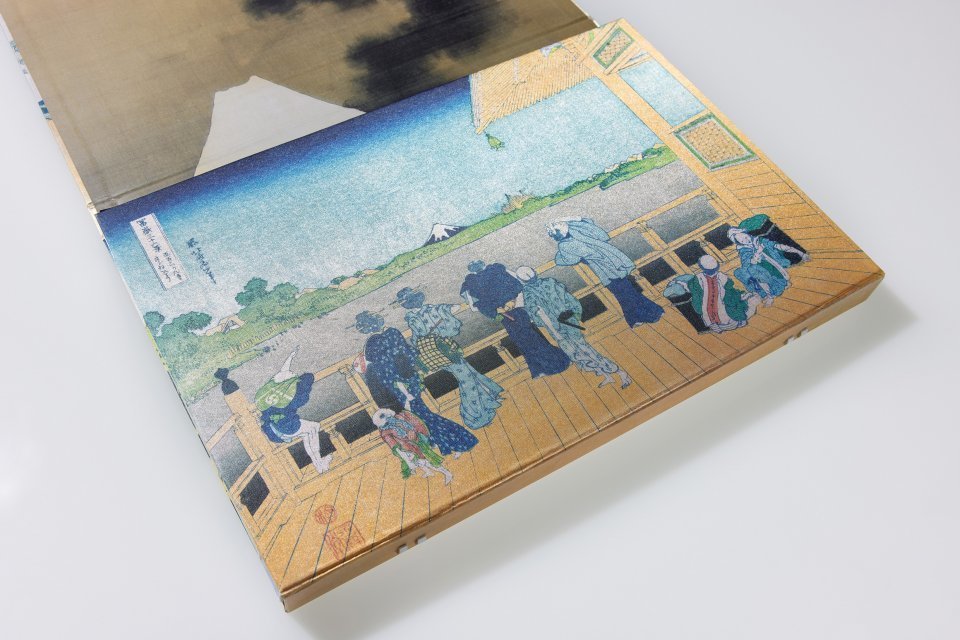[Most Recent Entries] [Calendar View]
Friday, July 16th, 2021
| Time | Event |
| 8:00a | How American Bandstand Changed American Culture: Revisit Scenes from the Iconic Music Show 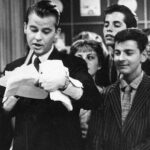 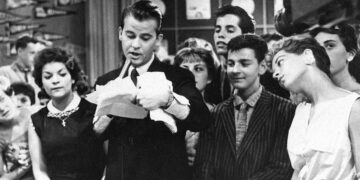 In a Pontiac advertisement that aired just before the 1969 episode of American Bandstand above, the year’s models are touted as “breakaway cars” — vehicles for escape without rebellion. The ad shows a handful of getaways, all ending at the dealership, presided over by a bland salesman who smiles and nods his approval. It’s an apposite choice for the program that follows — a show which, for 37 years, gave American audiences safe teenage rebellion in the wholesome container of Dick Clark’s fictional 50s record shop. As the episode opens, the camera pans around the bodies of teenage dancers, as if they were this year’s newest models, then lands on the smiling, square-jawed Clark, the seemingly ageless host who gave approval to the proceedings for the folks back home. What was he selling? Viewers could consume the latest dance trends and pop hits in their living rooms, then journey to the local record shop — just like the one on set! The show’s reach was huge, and most every artist who made an appearance crossed over into mainstream success. American Bandstand began its life in 1952 on a local ABC affiliate station in Philadelphia. Then it was called Bandstandand its hosts were radio personality Bob Horn and former ad salesman Lee Stewart, whom, it was thought, “could bring some of his clients on board as advertisers,” as Steve Cohen writes at the Cultural Critic. “Stewart had no charisma and eventually was dropped from the program.” Horn continued until 1956, when he was fired from the show after a drunk-driving arrest. The show’s wholesome image belied sordid beginnings. Clark joined at the young age of 26 to replace Horn, the hard-drinking, chain-smoking 40-year-old. Establishing an easy rapport with the show’s young dancers, who came from the local West Philadelphia Neighborhood, Clark helped return Bandstand to respectability, then pushed for it to go national, which it did in 1957, “beaming images of clean-cut, average teenagers,” notes History.com, “dancing to the not-so-clean-cut Jerry Lee Lewis’ ‘Whole Lotta Shakin’ Goin’ On’ to 67 ABC affiliates across the nation.” (A grossly ironic musical choice.)
Four years after becoming the show’s host, Clark became a millionaire at age 30. Hauled before Congress in 1960 to answer payola charges, he admitted to taking a few bribes, promised to divest, and skated away on charm while a business partner confessed and resigned. At the time, he described himself as “having an interest in 33 businesses,” Becky Krystal writes at The Washington Post, “ranging from music publishers to, as The New York Times reported, an operation that made and sold a stuffed kitten for sale on American Bandstand called the Platter-Puss.” His business model was decades ahead of the industry. “A man with an unerring sense of what Americans wanted to hear and see,” Krystal writes (or a sense of who to ask), Clark “achieved his greatest renown for an ability to connect with the taste of the post-World War II baby-boom generation. By the show’s 30th anniversary, almost 600,000 teenagers and 10,000 performers had appeared on the program. Among those to make early national appearances included Buddy Holly, James Brown, Ike and Tina Turner, and Simon and Garfunkel. Dance crazes such as the Twist and the Watusi could be traced to the ‘Bandstand’ studio.” American Bandstand didn’t only disseminate pop culture to the masses; it also has been credited with helping to integrate American culture with its integrated format. It’s a claim largely spread, his critics allege, by Clark himself. American Studies professor Matthew Delmont argues that, while the show sold an image of integration, allowing a few Black kids from the largely integrated West Philly neighborhood to appear, it also employed discriminatory tactics to exclude the majority of Black students who wanted to dance. Clark may have bowed to the pressure of the times, but he was a consummate salesman who never lost a chance to make a buck. As Delmont says, he began touting the show’s history of integration when American Bandstand faced stiff competition in the 70s from upstart rival Soul Train,a show that taught a new, post-boomer, post-Civil Rights generation of kids how to dance, and whose smooth-voiced creator-host Don Cornelius made the square-jawed Clark look like a total square. See many more clips and edited episodes of American Bandstand from 1963-1970, before Soul Train considerably upped the ante for dance shows everywhere, on YouTube here. Related Content: Talking Heads’ First TV Appearance Was on American Bandstand, and It Was a Little Awkward (1979) Josh Jones is a writer and musician based in Durham, NC. Follow him at @jdmagness How American Bandstand Changed American Culture: Revisit Scenes from the Iconic Music Show is a post from: Open Culture. Follow us on Facebook and Twitter, or get our Daily Email. And don't miss our big collections of Free Online Courses, Free Online Movies, Free eBooks, Free Audio Books, Free Foreign Language Lessons, and MOOCs. |
| 2:00p | A Dancer Pays a Gravity-Defying Tribute to Claude Debussy  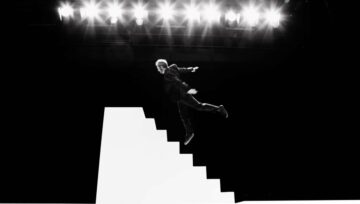 Most dancers have an intuitive understanding of physics. Choreographer Yoann Bourgeois pushes this science beyond the standard lifts, leaps, and pirouettes, drawing on his training at the Centre National Des Arts du Cirque for a piece marking the centenary of composer Claude Debussy’s death, above. Given the occasion, the choice of Clair de Lune, Debussy’s best loved piano work, feels practically de rigueur, but the trampoline comes as a bit of a shock. We may not be able to see it, but it plays such an essential role, it’s tempting to call this solo a pas de deux. At the very least, the trampoline is an essential collaborator, along with pianist Alexandre Tharau and filmmaker Raphaël Wertheimer. Bourgeois’ expressiveness as a performer has earned him comparisons to Charlie Chaplin and Buster Keaton. His choreography shows that he also shares their work ethic, attention to detail, and love of jawdropping visual stunts. Don’t expect any random boinging around on this tramp’. For four and a half minutes, Bourgeois’ everyman struggles to get to the top of a stark white staircase. Every time he falls off, the trampoline launches him back onto one of the steps — higher, lower, the very one he fell off of… Interpret this struggle how you will. Psyche, a digital magazine that “illuminates the human condition through psychology, philosophical understanding and the arts” found it to be “an abstracted interpretation of a childlike experience of time.” One viewer wondered if the number of steps — twelve — was significant. It’s no stretch to conceive of it as a comment on the nature of life — a constant cycle of falling down and bouncing back. It’s lovely to behold because Bourgeois makes it look so easy. In an interview with NR, he spoke of how his circus studies led to the realization that “the relationship between physical forces” is what he’s most interested in exploring. The stairs and trampoline, like all of his sets (or devices, as he prefers to call them), are there to “amplify specific physical phenomenon”:
Watch more of Youann Bourgeois’ physics-based choreography on his YouTube channel. Related Content: Hear Debussy Play Debussy: A Vintage Recording from 1913 Ayun Halliday is an author, illustrator, theater maker and Chief Primatologist of the East Village Inky zine. Follow her @AyunHalliday. A Dancer Pays a Gravity-Defying Tribute to Claude Debussy is a post from: Open Culture. Follow us on Facebook and Twitter, or get our Daily Email. And don't miss our big collections of Free Online Courses, Free Online Movies, Free eBooks, Free Audio Books, Free Foreign Language Lessons, and MOOCs. |
| 7:00p | Thirty-Six Views of Mount Fuji: A Deluxe New Art Book Presents Hokusai’s Masterpiece, Including “The Great Wave Off Kanagawa”  
Like most Japanese masters of ukiyo-e woodblock art, Katsushika Hokusai is best known mononymously. But he’s even better known by his work — and by one piece of work in particular, The Great Wave off Kanagawa. Even those who’ve never heard the name Hokusai have seen that print, arresting in its somehow calm turbulence, or at least they’ve seen one of its countless modern parodies and tributes (most recently, a large-scale homage in the medium of LEGO). But when he died in 1849, the prolific and long-lived artist left behind a body of work amounting to more than 30,000 paintings, sketches, prints, and illustrations (as well as a how-to-draw book).
None of those 30,000 works are quite as famous as his Great Wave off Kanagawa, but very few indeed are as ambitions as the series to which it belongs, Thirty-Six Views of Mount Fuji. It is that two-year project, the artistic fruit of an obsession with Fuji and its environs, that Taschen has taken as the material for their new book Hokusai: Thirty-six Views of Mount Fuji. Produced in a 224-page “XXL edition,” it gathers “the finest impressions from institutions and collections worldwide in the complete set of 46 plates alongside 114 color variations” — all sewn together, appropriately, with “Japanese binding.”
Not only does the book reproduce Thirty-six Views of Mount Fuji with Taschen’s signature attention to image quality, it presents The Great Wave off Kanagawa in a way few actually see it: in context. For that most widely published of all Hokusai prints launched the series, which continued on to Fine Wind, Clear Morning, Thunderstorm Beneath the Summit, and Kajikazawa in Kai Province, that last being an image held in especially high esteem by ukiyo-e enthusiasts. One such enthusiast, east Asian art historian Andreas Marks, has performed this book’s editing and writing, as he did with Taschen’s previous Japanese Woodblock Prints (1680–1938). Experiencing the whole of Thirty-six Views of Mount Fuji, more than one reader will no doubt become as transfixed by Hokusai as Hokusai was by his homeland’s most beloved mountain. You can pick up a copy of Hokusai: Thirty-six Views of Mount Fuji here. Find more beautiful Taschen art books here. Note that Taschen is a partner of ours. So if you purchase a book, it helps support Open Culture. Related Content: See Classic Japanese Woodblocks Brought Surreally to Life as Animated GIFs Based in Seoul, Colin Marshall writes and broadcasts on cities, language, and culture. His projects include the Substack newsletter Books on Cities, the book The Stateless City: a Walk through 21st-Century Los Angeles and the video series The City in Cinema. Follow him on Twitter at @colinmarshall or on Facebook. Thirty-Six Views of Mount Fuji: A Deluxe New Art Book Presents Hokusai’s Masterpiece, Including “The Great Wave Off Kanagawa” is a post from: Open Culture. Follow us on Facebook and Twitter, or get our Daily Email. And don't miss our big collections of Free Online Courses, Free Online Movies, Free eBooks, Free Audio Books, Free Foreign Language Lessons, and MOOCs. |
| << Previous Day |
2021/07/16 [Calendar] |
Next Day >> |





